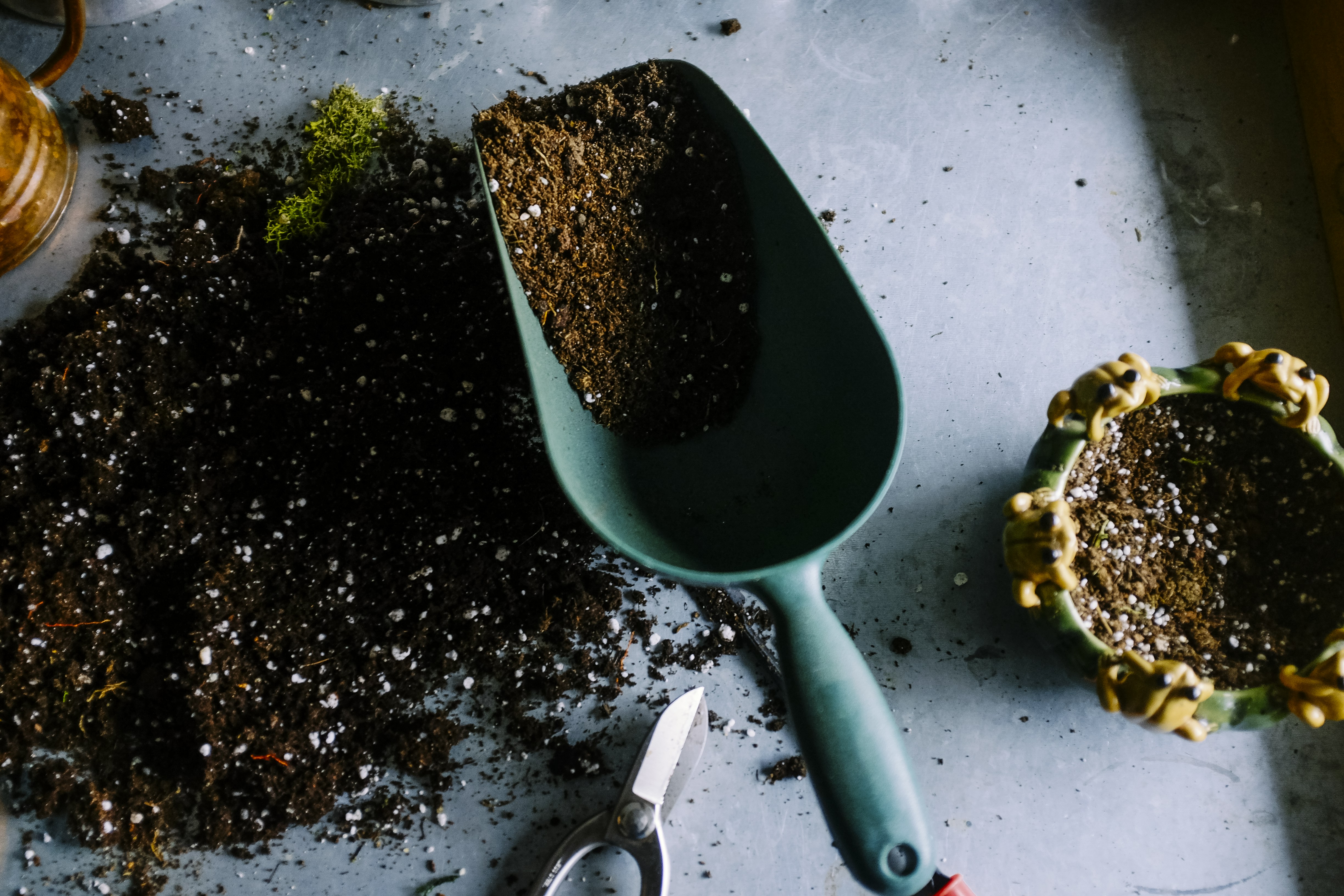So you’ve decided to take up gardening and now you’re wondering how to test the pH of your soil? Well, fret not, because in this article, we’ll guide you through the process step by step. Understanding the pH level of your soil is crucial for successful gardening, as it determines the availability of nutrients for your plants. So let’s dive right in and learn how to test your soil pH effectively, ensuring a thriving garden that will make your green thumb proud.
The Importance of Testing Soil pH
Understanding Soil pH
Before we dive into the importance of testing soil pH, it’s crucial to understand what soil pH is. Soil pH refers to the measurement of acidity or alkalinity of the soil. It is determined based on a scale that ranges from 0 to 14, with 7 being neutral. A pH value below 7 indicates acidity, while a pH value above 7 indicates alkalinity. Soil pH plays a vital role in plant growth as it directly affects nutrient availability, microbial activity, and overall soil health.
Why Is It Important to Test Soil pH?
Testing soil pH is essential for several reasons. Firstly, it provides valuable information about the suitability of the soil for different plants. Some plants thrive in acidic soil, while others prefer alkaline conditions. By knowing the pH of your soil, you can choose the right plants for optimum growth and health.
Secondly, soil pH directly affects nutrient availability to plants. Different nutrients are absorbed by plants at specific pH ranges. For instance, certain vital nutrients like nitrogen, phosphorus, and potassium are more readily available to plants in slightly acidic to neutral soils. However, in highly acidic or alkaline soils, these nutrients may become less accessible to plants, leading to nutrient deficiencies and stunted growth.
Moreover, testing soil pH allows for proper soil management and amendments. By understanding the pH level, you can make informed decisions about adjusting the soil to create an ideal environment for plant growth. This can include adding lime to raise pH levels or incorporating acidic amendments to lower pH levels.
In conclusion, testing soil pH is crucial for plant selection, nutrient availability, and effective soil management.
Effects of Soil pH on Plant Growth
The pH of the soil directly affects plant growth by influencing nutrient availability, microbial activity, and overall soil health. Here are some key effects of soil pH on plant growth:
Nutrient Availability: Soil pH affects the availability of essential nutrients to plants. For example, soil that is too acidic can limit the availability of nutrients like phosphorus, calcium, and magnesium. Conversely, alkaline soil can restrict the uptake of nutrients such as iron, manganese, and zinc. By testing and adjusting soil pH, you can ensure that plants have access to the nutrients they need for healthy growth.
Microbial Activity: Soil pH also impacts the activity of beneficial soil microorganisms. These microorganisms play a vital role in nutrient cycling and soil fertility. Acidic soils can inhibit the growth of certain beneficial bacteria and fungi, reducing their ability to break down organic matter and release nutrients. Maintaining a balanced pH level promotes a healthy microbial community, aiding in nutrient availability and soil structure improvement.
Disease Resistance: Different plants have varying levels of disease resistance, and pH can play a role in this. Some plant diseases are more prevalent in acidic or alkaline soil conditions. By maintaining the appropriate pH range, you can create an environment that promotes disease resistance and overall plant health.
Soil Structure: pH influences the structure and composition of the soil. Acidic soils tend to have higher concentrations of aluminum, which can be toxic to plants and damage root systems. On the other hand, highly alkaline soils can have excessive amounts of sodium, leading to poor soil structure and drainage. By testing soil pH, you can identify potential structural issues and take necessary measures to improve soil quality.
Understanding the effects of soil pH on plant growth is essential for successful gardening, farming, or landscaping endeavors. By optimizing soil pH, you can create an environment that supports healthy plants and maximizes their potential.
Methods of Testing Soil pH
Several methods are available for testing soil pH, ranging from simple DIY methods to more advanced laboratory testing. Here are some common methods used for testing soil pH:
Soil Test Kit
Soil test kits are affordable, easy to use, and widely available for home gardeners. These kits typically include pH test strips or capsules, a color chart, and sometimes additional tests for nutrients like nitrogen, phosphorus, and potassium. To use a soil test kit, follow these steps:
Choosing a Soil Test Kit
When choosing a soil test kit, consider the accuracy, ease of use, and additional features it offers. Look for kits that have a wide pH range and clear instructions.
Collecting Soil Samples
Collect soil samples from different areas of your garden to get a representative analysis. Use a clean trowel or shovel to gather soil from approximately 4-6 inches deep. Remove any debris, rocks, or organic matter from the sample. Combine the samples in a clean container and mix them thoroughly.
Testing Soil pH
Following the instructions provided with the kit, take a small portion of the mixed soil sample and add it to a separate container. Add the pH testing reagent or strip, and observe the color change. Compare the color to the chart provided with the kit to determine the soil pH.
Interpreting Results
Based on the color obtained from the test, refer to the chart to determine the soil’s pH level. The chart will indicate whether the soil is acidic, alkaline, or neutral. Some kits may also provide recommendations for specific plants based on the pH result.
Soil test kits are a convenient and cost-effective way to get a general idea of your soil’s pH. However, keep in mind that they may not provide the same level of accuracy as other testing methods.
Digital pH Meter
Digital pH meters offer a more precise and instant method of testing soil pH. These handheld devices use a probe to measure the pH level directly. Here’s how to use a digital pH meter:
Choosing a Digital pH Meter
Look for a digital pH meter that is specifically designed for soil pH testing. Consider factors such as accuracy, ease of use, calibration requirements, and durability.
Preparing the Soil Sample
Collect soil samples using the same method as described for soil test kits. Ensure that the probe of the pH meter is clean and calibrated according to the manufacturer’s instructions.
Using the Digital pH Meter
Insert the probe of the digital pH meter into the soil sample. Wait for the reading to stabilize, and then record the pH value displayed on the screen. Repeat this process for multiple samples to attain a representative average pH value.
Interpreting Results
The digital pH meter will provide a numerical pH reading. Compare this value to the desired pH range for your specific plants. If the pH falls outside the recommended range, appropriate amendments can be made to adjust the soil pH accordingly.
Digital pH meters offer greater accuracy and precision compared to soil test kits. They are particularly useful for professional gardeners, farmers, or those with an extensive garden or landscape.
Laboratory Testing
Laboratory testing provides the most detailed and accurate analysis of soil pH and other properties. While it is a more costly and time-consuming option, it offers the benefit of professional expertise and comprehensive soil analysis. Here is an overview of the process:
Why Opt for Laboratory Testing?
Laboratory testing is highly recommended for complex soil issues, large-scale agricultural operations, or if you require a detailed soil analysis. It provides in-depth information on soil pH, nutrient levels, organic matter content, and other essential factors.
Collecting Soil Samples for Lab Testing
Follow similar procedures as described for other methods to collect representative soil samples from different areas. Ensure that the sample is packed in a clean, airtight container to prevent contamination.
Submitting Soil Samples to a Lab
Locate a reputable soil testing laboratory in your area. Check their instructions for soil sample submission and any specific requirements they may have. It is advisable to provide information about your gardening goals, crops, or landscape type for accurate recommendations.
Understanding Lab Test Results
Once the lab analysis is complete, you will receive a report detailing various soil parameters, including pH. The report will typically provide recommendations for adjusting soil pH and other necessary amendments based on your specific gardening needs.
Laboratory testing is the most reliable and comprehensive method for determining soil pH. It is highly beneficial for professional growers or anyone seeking a detailed analysis of their soil.
Home Remedies
In addition to commercially available methods, several homemade remedies can provide a rough estimate of soil pH. These methods are not as accurate as laboratory testing or digital pH meters, but they can still give you a general idea of your soil’s pH level. Here are a few popular home remedies:
Vinegar Test
Take soil samples from different areas and place them in separate containers. Add vinegar to the soil and observe the reaction. If the soil fizzes or bubbles, it indicates the presence of alkaline conditions. No reaction suggests a more acidic soil.
Baking Soda Test
Similar to the vinegar test, take soil samples and place them in separate containers. Add baking soda to the soil and observe the reaction. If the soil fizzes, it indicates acidity, while no reaction suggests alkalinity.
Red Cabbage Test
Boil red cabbage in water until the liquid turns purple. Once cooled, add equal amounts of this cabbage water to separate soil samples. If the soil turns red, it suggests acidity, while a greenish color indicates alkalinity.
Litmus Paper Test
Moisten soil samples with distilled water and place small pieces of litmus paper into each container. Observe the color change of the litmus paper and compare it to a pH color chart to estimate the soil pH level.
While these home remedies are fun and educational, they should not be relied upon for precise pH measurements. They can, however, give you a rough idea of whether your soil is more acidic or alkaline.
Factors Affecting Soil pH
Several factors influence soil pH levels. It’s essential to understand these factors as they can help explain variations in pH across different areas. Here are some key factors that affect soil pH:
Geology and Parent Material
The geological composition of an area heavily influences soil pH. Different types of rocks and parent materials contain varying amounts of minerals, which can alter the soil’s natural pH. For example, limestone-rich parent material tends to create more alkaline soil conditions, while granite-derived soils may lean towards acidity.
Climate and Weathering
Climate plays a significant role in soil pH through weathering processes. In regions with high rainfall, leaching of minerals can occur, leading to more acidic soil conditions. In contrast, arid areas may have more alkaline soil due to the concentration of minerals.
Organic Matter and Decomposition
The decomposition of organic matter influences soil pH by releasing acids or alkaline compounds. Organic materials such as decaying plants, compost, or manure can affect pH levels. Acidic organic matter, like pine needles or peat moss, may lower soil pH, while alkaline materials such as wood ash can raise pH.
Fertilizer and Nutrient Application
The type and amount of fertilizers applied can impact soil pH. Fertilizers containing ammonium-nitrogen, such as urea, can decrease soil pH over time as they release acids during the nitrification process. Conversely, applying lime to the soil can increase pH by neutralizing acidity.
Irrigation Water Quality
The quality of irrigation water can also affect soil pH. Water from different sources can vary in pH levels, and if used consistently, it can influence the soil’s overall pH. For example, water with high alkalinity can gradually raise soil pH, while acidic water can lower it.
Understanding these factors and their influence on soil pH can help you identify potential causes for variations in pH levels and make informed decisions in corrective measures.
Factors to Consider When Testing Soil pH
When testing soil pH, several factors should be considered to ensure accurate results. Here are some key factors to keep in mind:
Crop or Plant’s Preferred pH Range
Different plants have specific pH requirements for optimal growth. Research the preferred pH range for the crops or plants you plan to cultivate. Adjust the soil pH accordingly to meet their needs.
Type of Soil
The type of soil, such as sandy, loamy, or clay, can influence the soil pH. Sandy soils tend to be more acidic, while clay soils can be more alkaline. Take this into consideration when interpreting pH results and making adjustments.
Garden or Landscape pH History
If you have been gardening or maintaining a landscape for a while, consider the history of your pH adjustments. Soil pH can change over time due to factors like weathering, amendments, or plant selection. Knowing the pH history can help you understand trends and make more accurate adjustments.
Time of Year
Soil pH can exhibit seasonal variations. For example, acidic soils may become more alkaline over time due to the decomposition of organic matter. To obtain accurate results, consider testing your soil at the same time each year.
Consistency of Testing
Consistency in testing is crucial for effective soil management. Test your soil pH regularly to monitor any changes over time. This will allow you to make timely adjustments and maintain optimum soil conditions for plant growth.
Considering these factors when testing soil pH will help you obtain accurate results and make the necessary adjustments for successful gardening or landscaping.

Interpreting Soil pH Results
Interpreting soil pH results is an essential step in understanding the current condition of your soil and taking corrective measures as needed. Here are some key points to consider when interpreting soil pH results:
Understanding pH Scale and Ranges
The pH scale ranges from 0 to 14, with values below 7 being acidic, 7 being neutral, and values above 7 being alkaline. Specific plants may require a pH level within a certain range for optimal growth. Consult reputable sources or gardening guides to determine the desired pH range for your crops or plants.
Adjusting Soil pH
After interpreting the soil pH results, you may need to adjust the pH to meet the preferred range. For acidic soils, adding lime or other alkaline amendments can raise the pH. Conversely, for alkaline soils, adding acidic amendments like sulfur can lower the pH. Follow recommended guidelines and perform additional soil tests to monitor the effectiveness of the adjustments.
Acidic Soils
If the soil pH falls below the desired range, it indicates acidity. Acidic soils can be corrected by adding lime, dolomite, or wood ashes. These amendments help neutralize the acidity and raise the pH. Monitor the pH closely after adjustments to avoid overshooting the desired range.
Alkaline Soils
If the soil pH is above the desired range, it indicates alkalinity. Alkaline soils can be rectified by incorporating acidic amendments such as sulfur or elemental sulfur. These amendments work to acidify the soil, lowering the pH. As with acidic soils, monitor pH levels closely after adjustments.
Neutral Soils
A pH of 7 indicates a neutral soil. While many plants can grow well in neutral pH, some may require slightly acidic or alkaline conditions. Adjust the pH as necessary to meet the specific requirements of your plants.
Interpreting soil pH results correctly will enable you to make informed decisions and take appropriate actions to create an optimal growing environment for your plants.

Conclusion
Testing soil pH is a fundamental aspect of successful gardening, farming, or landscaping. By understanding and monitoring soil pH, you gain valuable insights into nutrient availability, microbial activity, and overall soil health. Whether using soil test kits, digital pH meters, laboratory testing, or homemade remedies, determining your soil pH helps you make informed decisions about plant selection, soil amendments, and optimal gardening practices. Remember to consider the factors that influence soil pH, interpret the results accurately, and make necessary adjustments to create an environment that fosters healthy plant growth. Happy gardening!






